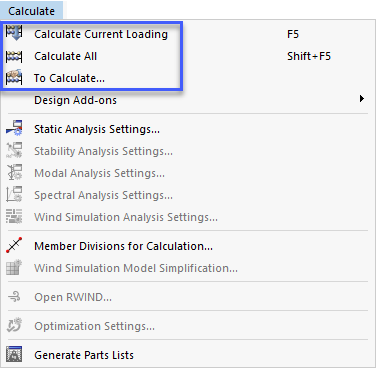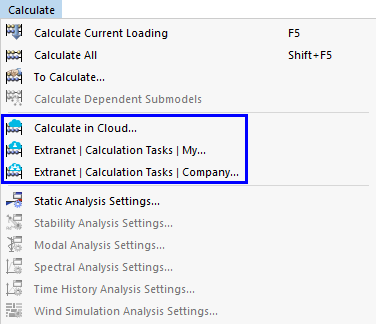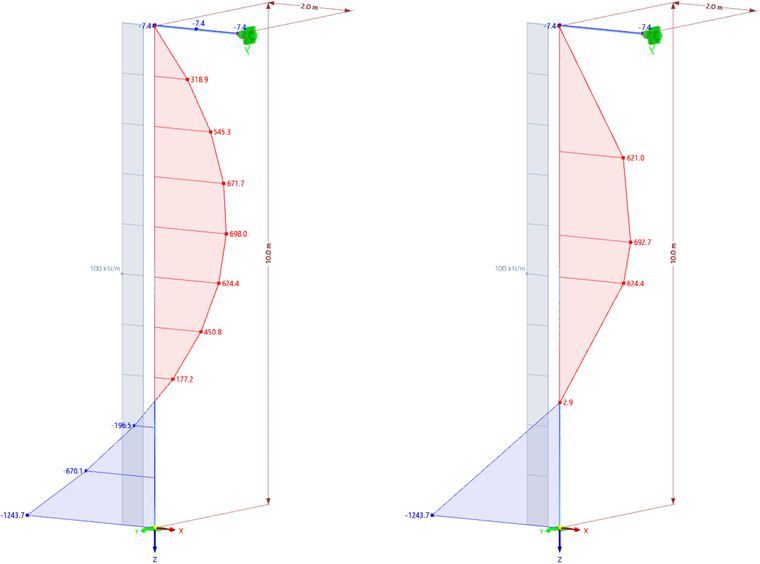Before you start the calculation, you can carry out a plausibility check of the input data.
The Calculate menu offers various options to start the structural analysis of the model. They are described in the chapter Starting Calculation.
If the options for cloud calculations are activated, additional menu items are available.
In the "Calculate" menu, you also have access to the static analysis settings.
Member Divisions for Calculation
The distribution and the degree of refinement of the graphic results are based on the settings specified in the "Member Divisions for Calculation" dialog box. You can open this dialog box using the Member Divisions for Calculation function in the "Calculate" menu.
Number of divisions for result diagrams
The value entered in this text box affects the graphical result distribution of the members: For example, if a division of 10 is set, RSTAB divides the length of the longest member within the model by 10. Based on this system-related division length, RSTAB determines the graphical result distributions on the division points for each member (see the image Bending Moments).
Number of divisions for special types of members
In contrast to the division option described above, a real division of the member is defined by internal intermediate nodes. This specification affects elastic foundation members with an unsymmetrical cross-section (contact pressures), tapered members (interpolation of section values), and members with plastic properties (yielding areas).
Number of divisions for determination of max/min values
The value of this text box specifies the internal division by which the maximum and minimum internal forces of members are determined. Thus, this division (default setting: 10) represents the basis for the extreme values shown in the results tables and graphics.
Activate member divisions for large deformation analysis, structural stability, dynamic analysis
This option allows you to also divide beam members using intermediate nodes for calculations according to the large deformation analysis or regarding stability and dynamics, and thus determine them with greater accuracy. The number of divisions for "special types of members" is applied here (the second text box above).




